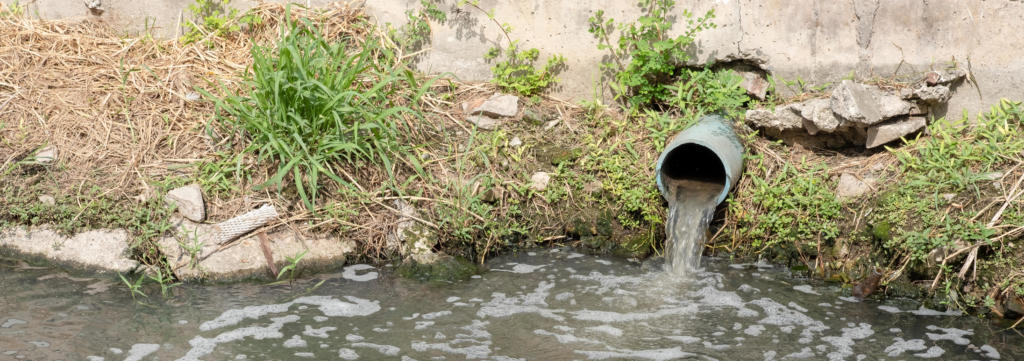
Septic tanks may not be the most interesting subject to read (or write!) about, but if your home relies on a septic tank rather than public sewerage then you need to be aware of regulatory changes which have now come into force and consider whether they affect you. In particular, if your septic tank discharges into surface water (i.e. a river or other watercourse) then you will need to take action “as soon as possible”, which probably means within the next twelve months.
The Environment Agency (EA) has been planning these changes since 2015, when they instituted new “General Binding Rules” governing small domestic sewage discharges – one of the main provisions in these new rules was that septic tanks discharging directly into watercourses would become unlawful from 1st January 2020. This deadline has now been relaxed, but any remaining septic tanks of this type now need to be decommissioned or adapted “as soon as possible” instead – the EA have indicated that in most cases this means within the next twelve months. Failing to comply could lead to enforcement by the EA, and potentially to prosecution.
What changes need to be made? The EA gives three options:
- Connect to a mains sewer (this will obviously not be possible in many cases)
- Install a drainage field which complies with BS 6297:2007. This converts the septic tank so that it discharges into the ground, rather than into a watercourse.
- Replace the septic tank with a small sewage treatment plant which complies with BS EN 12566. The effluent from these plants is cleaner and so can be discharged straight into a watercourse. You will need buildings regulations approval and may also need planning permission to cover the new installation.
Any septic tank or small sewage treatment plant (whether discharging to ground or watercourse) also needs to comply with the other aspects of the EA’s General Binding Rules:
- It must be properly installed according to the manufacturer’s instructions.
- It needs to have sufficient capacity (this is particularly an issue if you’ve extended your property, or connected in an additional dwelling)
- You must ensure that it is regularly emptied
- It needs to be kept in a good state of repair – cracks, leaks and failed components could cause pollution, which could lead to enforcement action by the EA.
- If you’ve installed or replaced the system since January 2015 (or are planning on replacing it), you’ll need a permit from the EA if the discharge point is near a “sensitive area”. This includes various sites of particular environmental importance – you should consult with the EA and with your contractor to find out if this applies to you.
